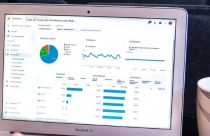Predicting the Future of Research

Publications, by their very nature, represent the end of a cycle of research. A set of scientists pose a research question, do some experiments, and arrive at an answer to their question. Papers therefore only tell you where a group of authors have been. They don’t tell you what their new focus is. Analyzing publications therefore only reveals historical research trends. What if you could predict current research trends more reliably?
Digital Science is a technology company with a vested interest in simplifying the research cycle in order to give scientists more time to devote to discovery. On January 25, they released a new module of Dimensions, a global grants database. Dimensions is a catalog of more than 3.38 million research projects in progress around the world being supported in funding by more than one trillion US dollars. It is also the first searchable database of awarded research funding. Dimensions is now available to researchers for the very first time.
Dimensions offers its users the ability to assess how current research projects are positioned in the global research community. For example, how many research grants have been allocated to a particular research question? How many funders are interested in a particular area? Is funding increasing or decreasing around a particular research question? Are there any researchers working in a similar area that you could collaborate with? Which funding agencies are currently investing in your area of research? The answers to all of these questions can guide you in making decisions regarding where to apply for research grants. Dimensions is also useful to STEM publishers who can use it to inform their strategic decisions. Mining Dimensions can provide insight for editorial, product development, and sales plans. It can also highlight who the thought leaders are in a research area. These individuals can then be approached for conferences, events, and as reviewers for manuscripts. Not only does Dimensions include a wealth of information, it has been designed for ease of use. There are many easy to understand visualizations that can be used for various comparisons. The database provides metrics which are continuously being updated, such as the Relative Citation Ratio (RCR) score. The Altmetric score, which is a measure of the impact of a research based on the attention it is attracting online, is also included in the database for the publication listings.
Dimensions, therefore, represents a unique resource that should prove invaluable for researchers and STEM publishers alike. Dimensions truly has the potential to revolutionize the way researchers approach funding and collaboration, as well as continue to help STEM publishers with their strategic plans.









